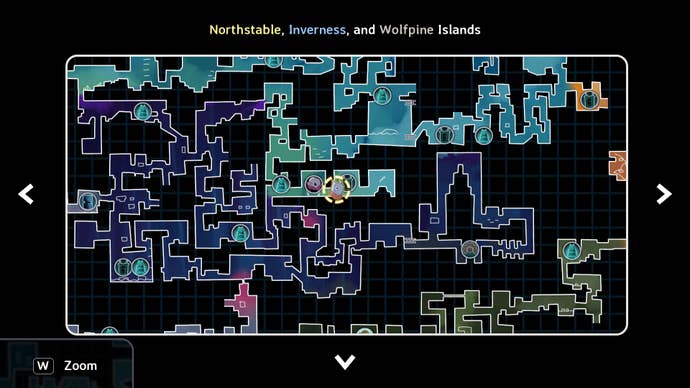Islets review – If the wait for Hollow Knight: Silksong is getting you down, you need to try this
“We’ve got Hollow Knight at home” never sounded so appealing.
There’s a supermarket chain here in Europe called Lidl, and if you don’t know what to expect when you enter, it’s baffling. One of the strangest places on earth for the unprepared. The shelves are lined with goods that are almost what you get in other supermarkets – almost. The branding is slightly askew, the brand-famous colours slightly off; the cola is a bit more burgundy, the chocolate a more muted shade of purple. The Oreos are called Neos, for some reason. It’s like wandering into a peculiar – significantly cheaper – otherworld.

That’s what Islets is to Hollow Knight. It’s the off-brand, cheaply-made budget version of everyone’s favourite premium Metroidvania. You can tell exactly what it’s going for – the combat, the aesthetic, the level design, the enemies, and even the graves of the humongous creatures that came before… they’re all there, and intact. But instead of that painterly style Team Cherry has injected into the doomed undergrowth of Hollow knight, you’ve got this Flash game aesthetic. Instead of a rich, sweeping soundscape, you’ve got a hodgepodge collection of sound effects and some much more simplistic music.
But none of that is bad. In fact, the simplicity of it all – this decidedly off-brand feel – works in the game’s favour. It means you don’t get too distracted from the cool mechanics, from the simple-but-effective combat, from the tight platforming. Everything on-screen is readable, simple to parse: the cracks at the end of this map? That’s a secret, for sure. The big pink glowing skeleton circling this block? That’ll hurt you if you touch it. This rotating red circle in the middle of your airship? Well, that’ll be your hitbox.
There’s a simple charm to Islets on the surface, but once you crack open the ‘inspired by’ packaging and pour the contents out on your worktop, you’ll notice the game has its own charm. There isn’t quite as much of a focus on combat as other games in the Metroidvania revival, for example, and some of the platforming puzzles that get fed into the title as you progress through its eponymous floating islands are genuinely so impressive that you’ll be forced to grin as you figure out how they work. And how you can take advantage of them in order to find all the little secrets developer Armour Games has thumbed into the cracks.


The setup of the game is simple: you’re a brave little mouse, Iko, setting out on an adventure to fix the islands. Over time, the five islands have drifted apart, and many adventurers before you have set out on quests to get to the heart of the islands, reactivate the magnetic cores, and draw them together. This means – as you’d expect – there are fragments of maps you’ll need to return to as you collect more powers; double jumps, wall climbs, dashes, and so on.
What sets Islets apart, though, is how it plays into the backtracking nature Metroidvania games require of you. Instead of simply returning to an area and jumping a bit higher than you did last time, whole new areas are made available from pre-existing paths once you reconnect two islands together. Whether this means more fiendish platforming, another hidden boss, or simply weaves a geographical brainteaser together for you depends on the island.

The game is a touch more straightforward that its contemporaries, and that’s fine; it’s a quick completion, but you’ll be hooked every step of the way. There’s not as much mechanical depth as you’d see in Bloodstained, or Hollow Knight, or Guacamelee – but that’s really not the point here. It’s more wholesome than any of those games, at its core, and it’s funny, too: feeding a treacherous tour guide-cum-frog to the very spirits he’s trying to sacrifice you to is funny. Watching an arrogant, well-to-do, mouse peer blow smoke up his own arse ad infinitum is funny. Being the quiet unsuspecting hero that saves the world from devastation… well, I wasn’t expecting it, but that’s funny too.
The game really does have this Newgrounds or Kongregate feel to it, and I say that with respect. The animations are simple, the sound effects rudimentary, the graphics plain. But there’s a richness to the game design that supercedes all of that, and a charming little game at the heart of it put together with such artisanal craft, you can close your eyes and think you’re playing Ori and the Blind Forest, or something.

So don’t let any screenshots of trailers put you off, if you’re thinking “it looks like Hollow Knight, but in 2002” – none of that stuff matters. What matters is how this game feels in your hands, how late you’ll stay up going “I’ll just explore one more area” or “I’ll just take down one more boss”. This is a gorgeous game, and a compelling one at that, and anyone that ekes out even a fraction of enjoyment from this genre owes it to themselves to at least give this a go.
I promise you, it’ll leave you charmed and hungry for more.

